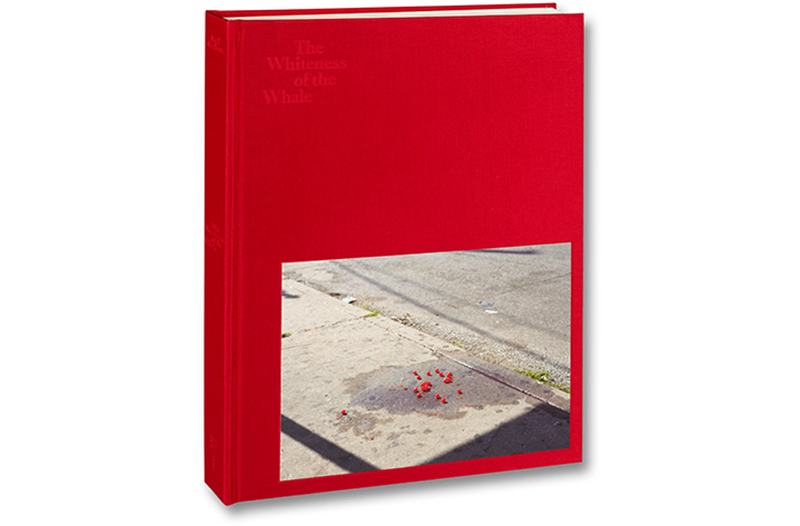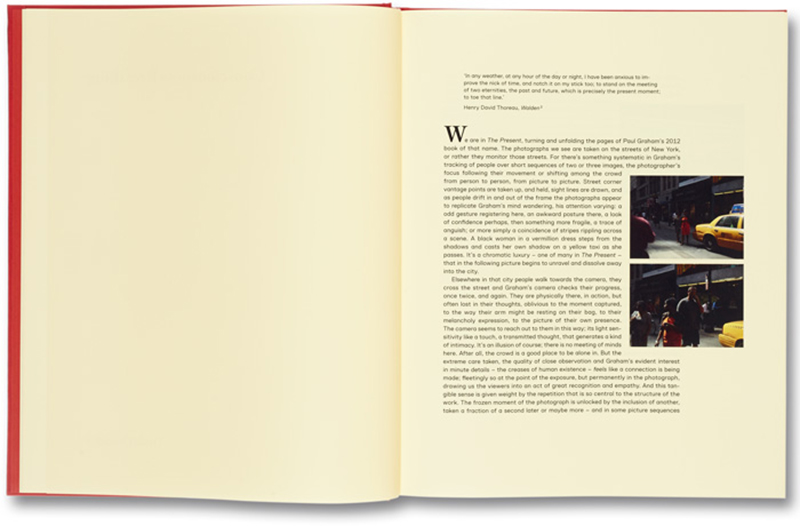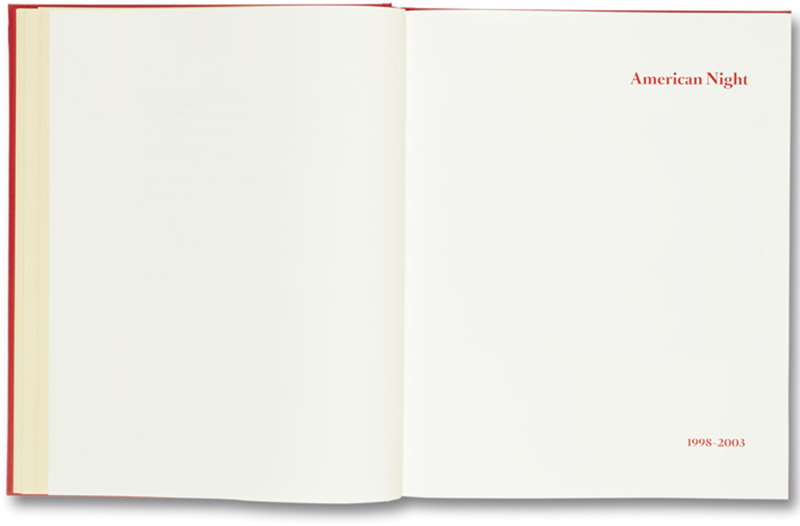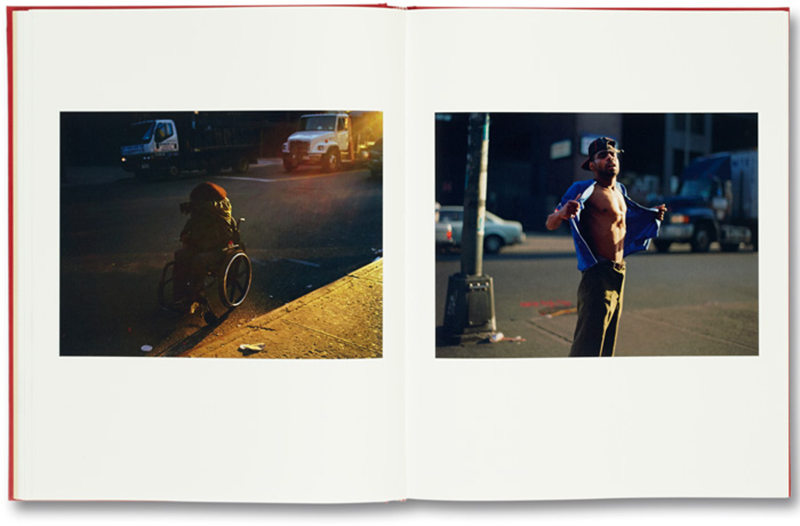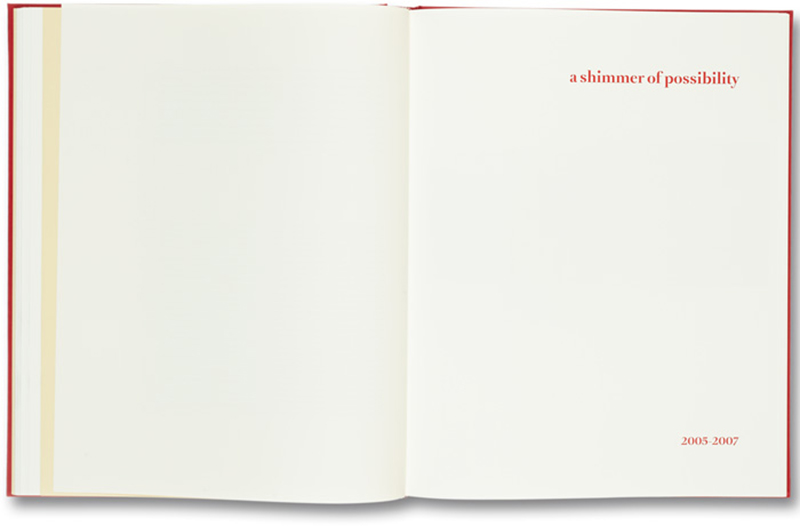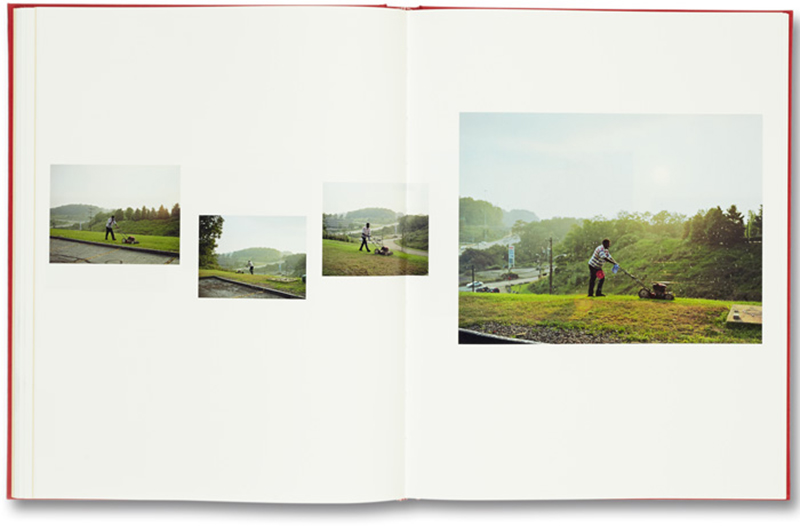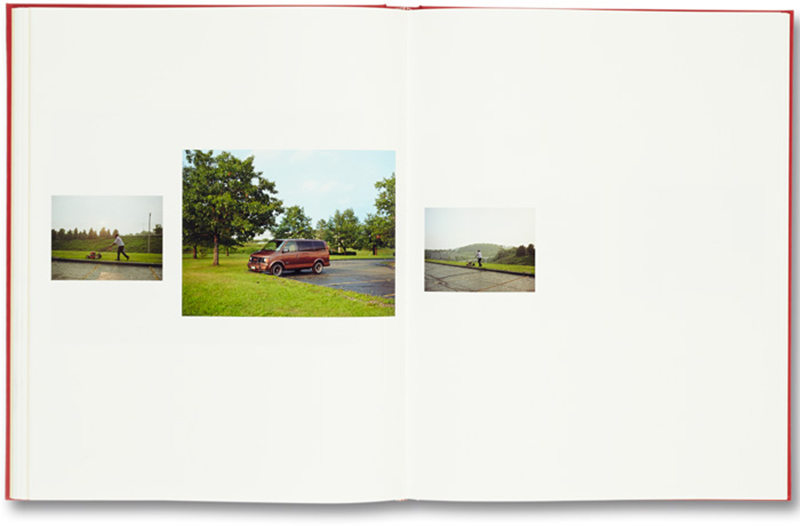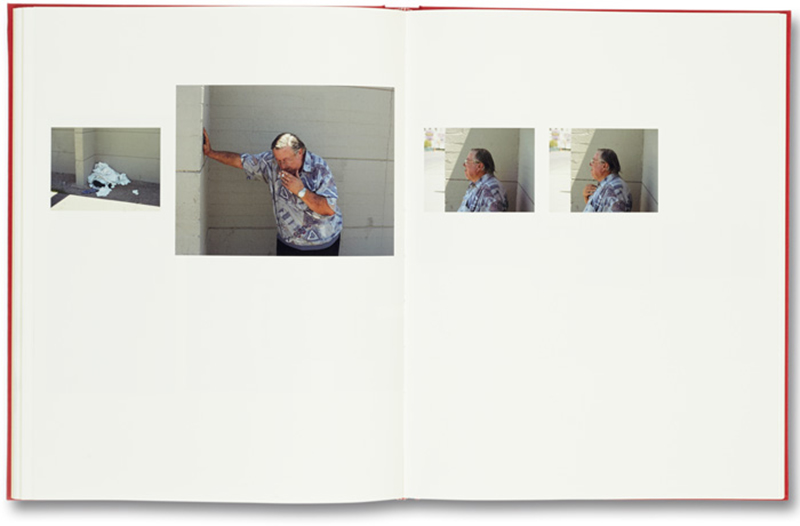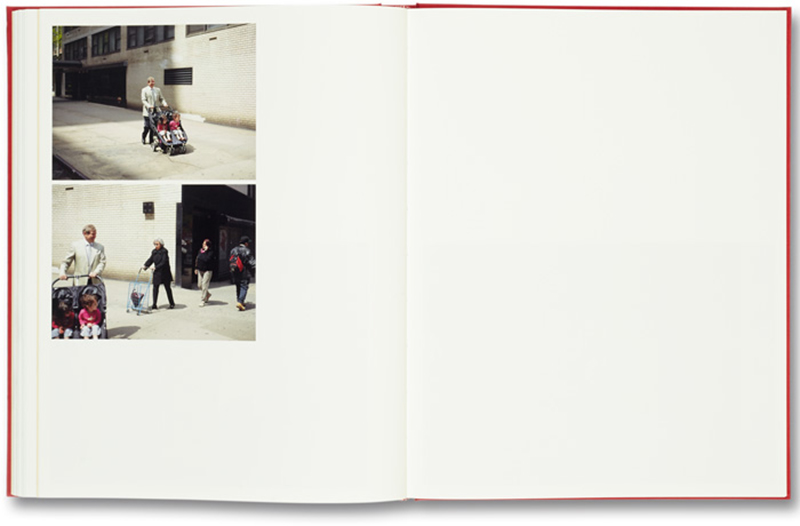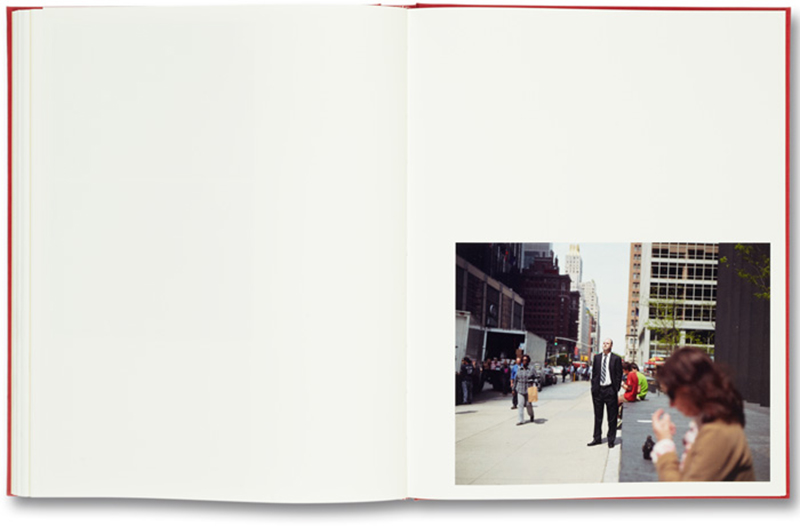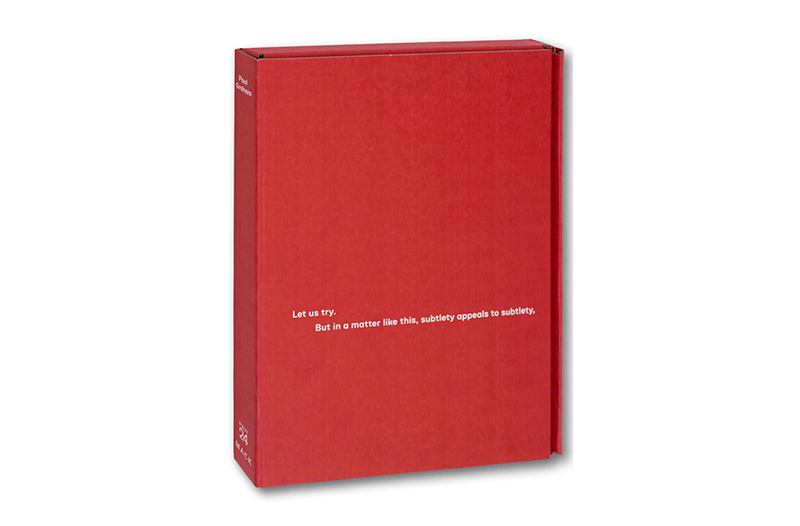Paul Graham – The Whiteness of the Whale
Book spreads courtesy of MACK
The Whiteness of the Whale by Paul Graham (MACK, 2015), BUY
It is sometimes the case that those ‘breaks’ that seem to define an artist’s evolution appear more abrupt when they actually occur than in retrospect when the whole pattern can be more clearly discerned. The development of Paul Graham’s work in America is ostensibly one such break and yet with the publication of three major series collected under the title of The Whiteness of the Whale it is possible to see how the qualities of that work is presaged in what came before, as well as where it substantially departs from it. Of course no artist wants to merely repeat past successes and the strategic change in Graham’s American work, as distinct for that made in Europe, Japan and elsewhere, is no doubt marked by a willingness to abandon known formulas. What most obviously defines his work in America is the use of specific formal strategies that engage with particular ideas about photography as a medium and the constraints it imposes on how we see – as well as understand – the world in which we live, while never losing sight of the fact that this world is the sum of its social and political forces. Graham remains productively wedded to the notion that photography is ‘about’ the world around us, even if both he and many others describe the work in a way that emphasises its formal concerns. The first continuity we might note, then, is an emphasis on lived, social reality, albeit one that it would be a mistake to understand in ‘documentary’ terms.
In many ways, what The Whiteness of the Whale is at pains to demonstrate is Graham’s fundamentally critical relationship to the norms of documentary photography as they have been traditionally conceived. Again, this is nothing new. His work from the very beginning has grappled with the necessity of describing social reality in a way that does not fall back on accepted modes of representation. This is visible in his work in Northern Ireland (Troubled Land, 1987), for example. It is arguable, then, that the formal strategies of his American work, such as overexposure and the use of precisely calibrated ‘narrative’ sequences is a further attempt to complicate the ways in which this reality might be visualized, resisting the engrained habits of the documentary tradition, while, paradoxically, fore-grounding the specifically ‘photographic’ qualities of the medium, namely the parameters of subject, time, focus and exposure. The role of photographer as unreliable witness is perhaps also suggested by the title of this collection, which comes from Herman Melville’s Moby Dick and is spoken by the narrator Ishmael, rather than Ahab, captain of the doomed Pequod, in reference to the latter’s single-minded obsession with the White Whale. Ishmael is the only survivor, the only one left to tell the story and so remains central to, but fundamentally aloof from the narrative – a useful description of the photographer’s role.
He is also a sort of confidence man; Ishmael might not even be his real name. Among the key themes of Melville’s novel is the unreliability of ‘mere’ appearance and, in a similar fashion, Graham repeatedly challenges us to be sure of what we’re ‘seeing’ in his pictures. With equal insistence, he reminds us that we can’t ever really be sure, burning out the image to the point of illegibility in American Night, and then in both a shimmer of possibility and The Present stressing the fact that a given photograph represents any number of alternative possibilities, all the moments before, after and in between. The photographer makes a choice either at the moment of exposure or later when editing that shapes our perception of what is being depicted. His use of use of a serial structure in American Night and the more complex forms of shimmer, which consists of ‘cells’ of pictures that elaborate on a particular moment, might seem at odds with the forms that drove his earlier projects. These tended to be rather ‘linear’ narratives, which does not mean that their meaning unfolded in a linear way, with one event following the next, but rather that the variation of the narrative was contained in a single line of different event or moments juxtaposed within that structure. By contrast, American Night moves between a number of defined points and nothing more. In fact, this kind of serial approach also characterized Graham’s earlier The End of an Age (1999), which now seems, again with retrospective continuity, something of a transitional work.
But he also punctures the eye-straining emptiness of these over-exposed images with pictures of suburban houses that are as a result almost excessive in their colourful intensity. They form a deliberate counterpoint to the solitary (largely black, male) figures on the literal margins that populate the other photographs. The comparison would be heavy-handed, indeed even simplistic, were it not for the rigour with which Graham executes his serial approach and also for the sheer optical overload that the contrast induces when moving between pages. There is also a further element here that contributes to the weight of the series. Some of the most striking pictures in American Night are concerned with isolated, expressive figures lit up against the relative darkness of the city that surrounds them. The constant movement between what can be seen and what can’t – what warrants visibility, and whom, is at the core of this work. Despite the emphasis that is placed on it as an end in itself, it seems disingenuous to suggest that the formal strategy of the pictures is anything other than a point of departure for the consideration of a wider reality. The visual ‘inequality’ in terms of representation is, in that sense, a social inequality as well, which Graham has incarnated in the form of the work, rather than simply relying on the existing conventions of documentary photography.
Although not necessarily conceived as such, the works form a loose trilogy and at its core is a shimmer of possibility, arguably the most iconic statement of Graham’s recent career. If photographic narrative tends toward the linear, implying forward movement by the succession of different images, with shimmer Graham reverses this trend by letting particular moments unfold in ‘blocks’ that sit together like chapters in a book, or perhaps more accurately, like a collection of short stories. The events themselves are not spectacular and really that is their appeal. His trenchant attention to the everyday is in itself polemical, suggesting how we have become insensible to what is right in front of us. Once again, this desire to get beyond a habitual (photographic) response can be said to encompass both the perceptual and the sociological. The reasons we can’t – or often, just don’t want to – see what’s happening around us should be plain enough. But to emphasise the point Graham concentrates on marginal places and, it should be said, marginal lives. His short encounters and glimpses of a social reality add up to a poignant, yet also decidedly barbed composite image of contemporary American life. It is an unfortunate limitation of the book’s format that many of the pictures in each group are reproduced in near miniature, making them rather difficult to read. This is a particular issue given that the work relies on discerning often small differences between the pictures for its overall effect. Details that can be easily seen in the prints are almost entirely lost here.
The relative lack of economic diversity in shimmer is also striking and maybe even deliberate, given Graham’s argumentative relationship with the legacy of the documentary tradition, which makes a fetish of marginalisation. But the extent of that engagement isn’t entirely clear and the focus on the formal, narrative aspects of the work by most commentators has done little to clarify the matter, even as that same narrative structure is the means by which he achieves such a meaningful intensity from very little. Ostensibly there is even less in The Present, where he concentrates on the streets of New York. The moments he chooses are almost entirely non-events, having little in common with the clichéd human dramas of street photography. Instead his subject here is time unfolding, much as it was with shimmer, except that the blocks or cells have been reduced to an absolute minimum, before and after, where different elements in each are the focus for successive pictures. Graham has effectively moved from the margins to the centre, with the city representing a concentration of wealth, but also framing the inescapable confrontation between those who have it and those who don’t – the pictures move our attention back and forth between people, whom we can’t really know except in terms of the contrasts they present (another way of reading the title perhaps).
The book itself is a fairly sumptuous production, with a vivid red cover featuring a tipped-in image, also echoing that signature colour. As essentially a sort of retrospective, the heft of the book is fitting, though as already noted there are compromises in terms of scale for some of the work. It is housed in a cardboard cover, a box rather than a simple slip-case, an arrangement that is attractive, but ultimately somewhat unwieldy. There is no doubt, however, that in summing up a major achievement for Graham and for photography as a medium, The Whiteness of the Whale is a significant feat, one that brings together three bodies of work that are at once a vision of America in the present and also a roadmap of strategies for the future of photography where the conventional vocabulary of socially-engaged practice has largely failed to account for the complexities of the world in which we now live. While it is entirely possible to overemphasise the formal attributes of the work, something even Graham himself has done, there is no denying either their substance as innovations in terms of how photography is used. However, the key point remains what it is being used for and here the emphasis on the formal aspects of the three series tends to obscure their social relevance. In common with his earlier work, the context in which Graham now employs these formal strategies still matters, and can’t be easily overlooked.

